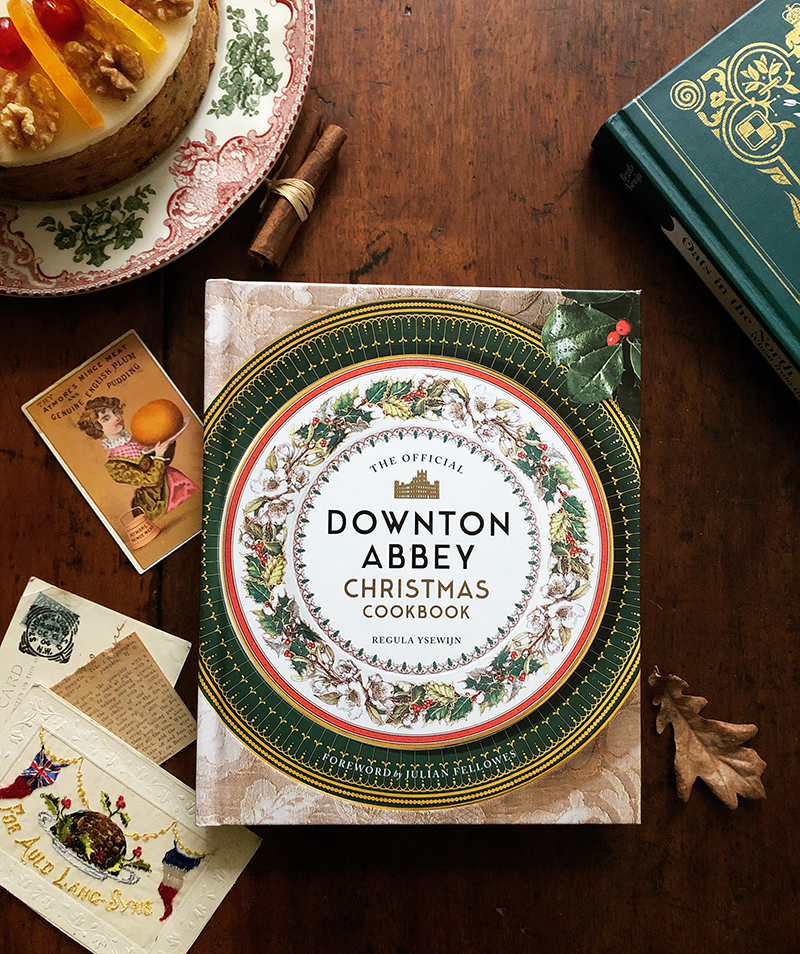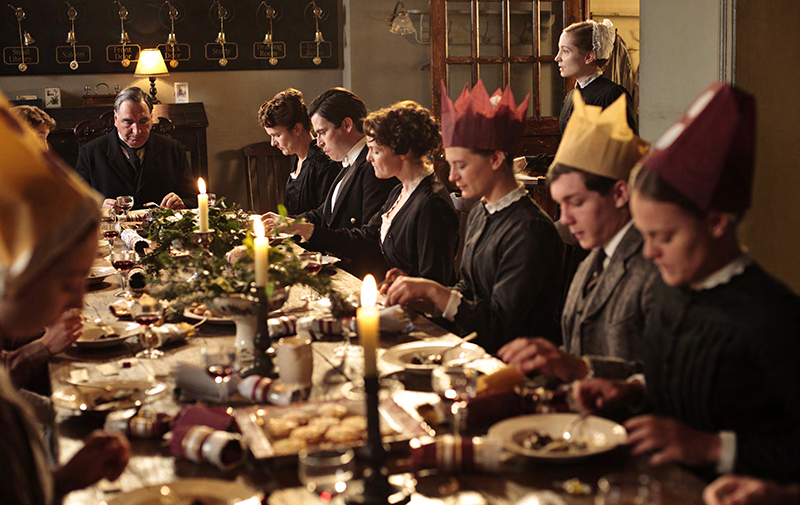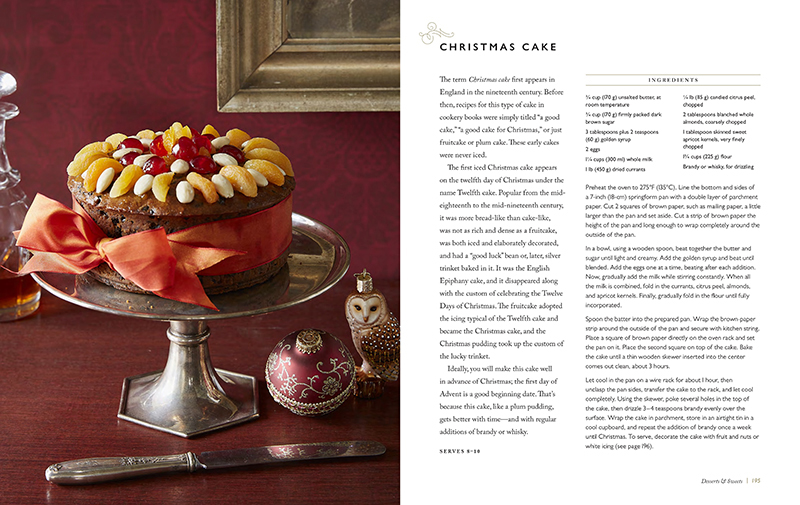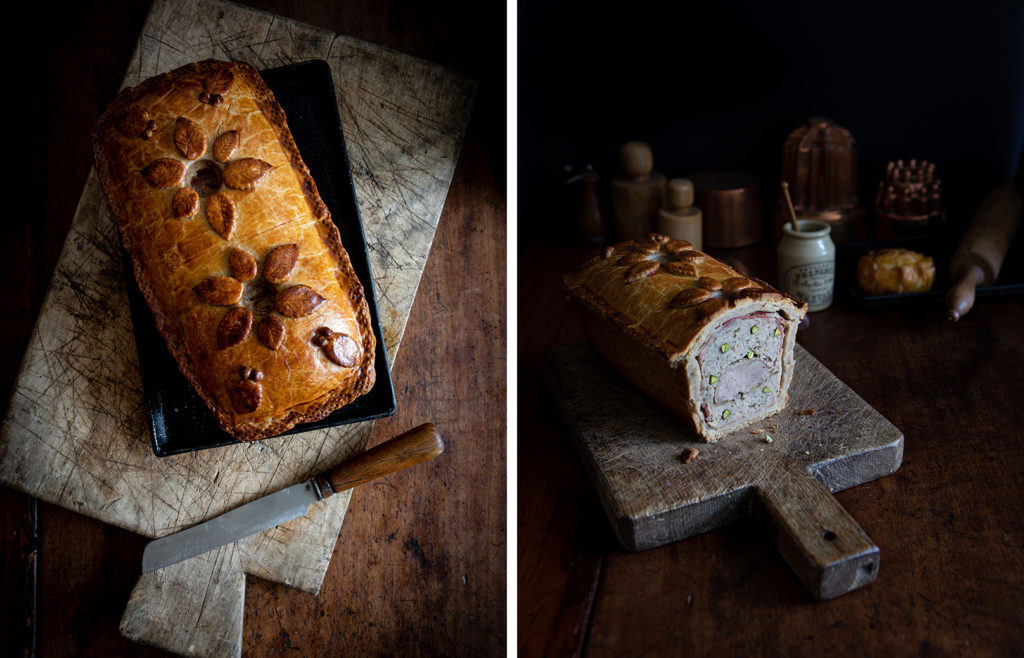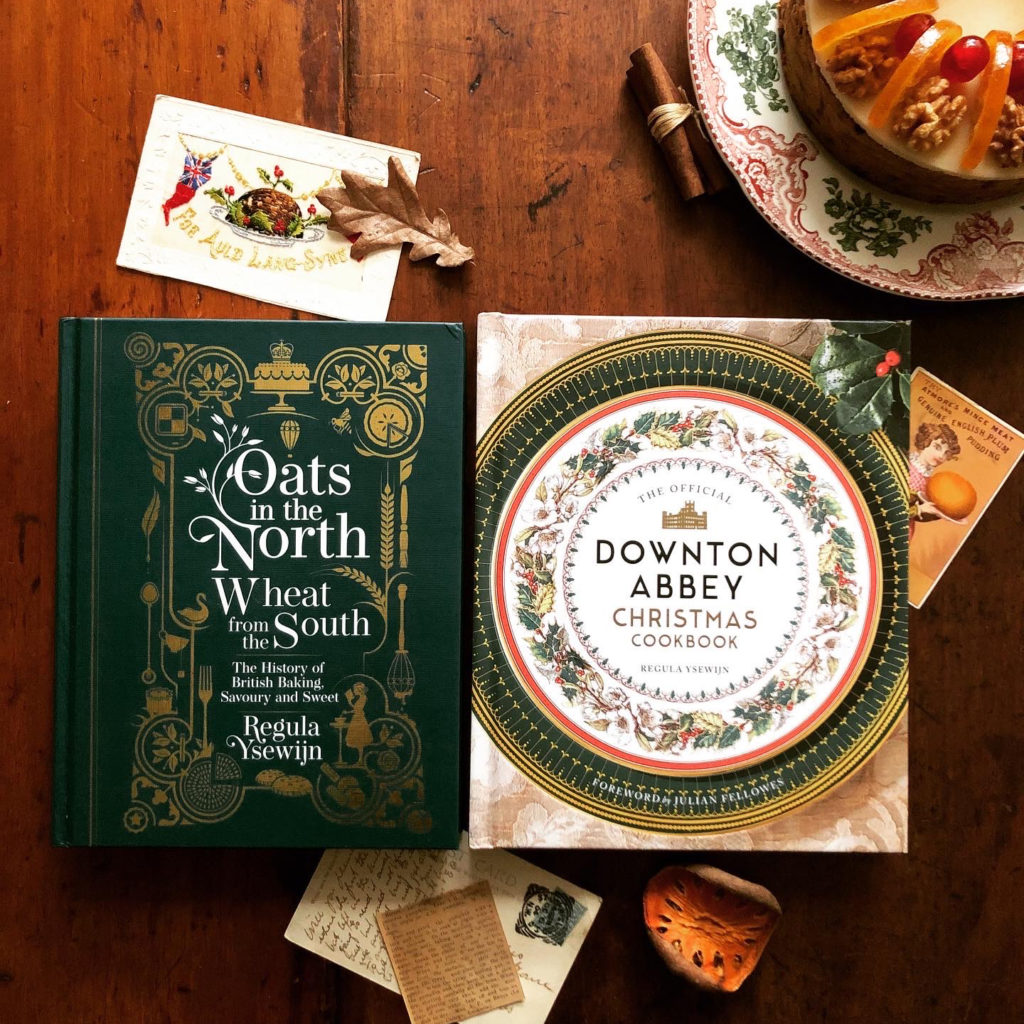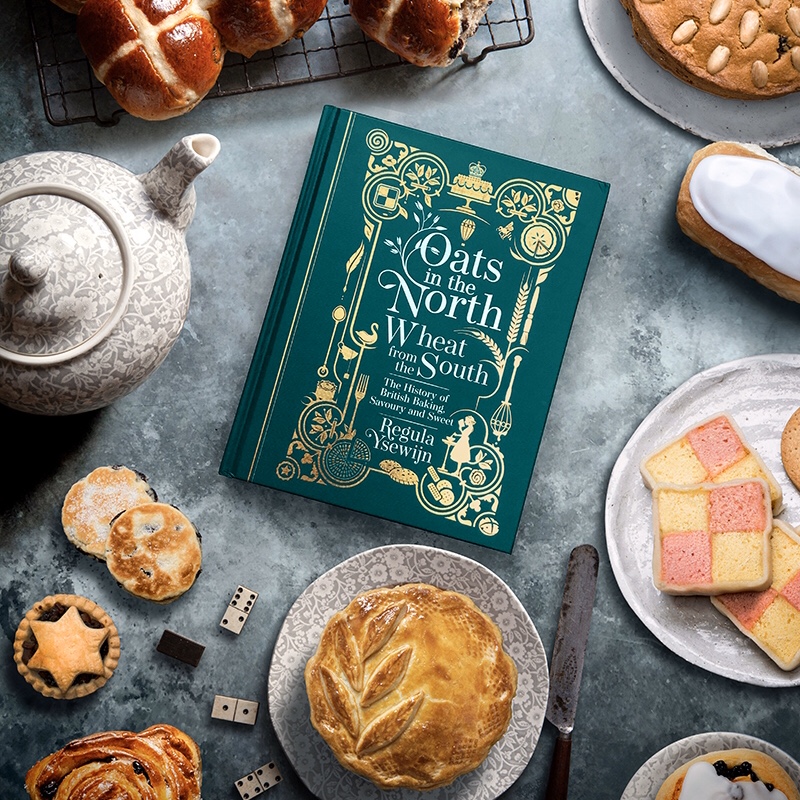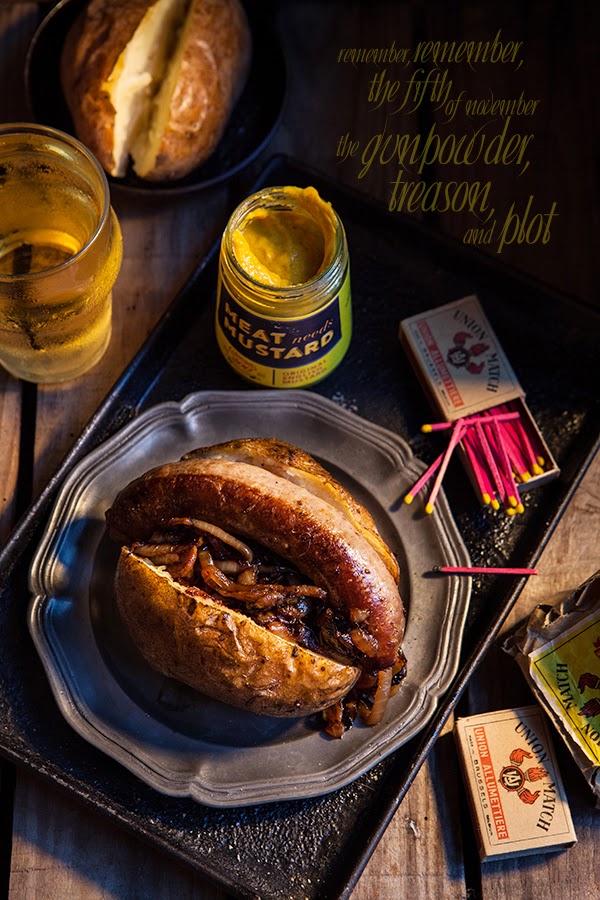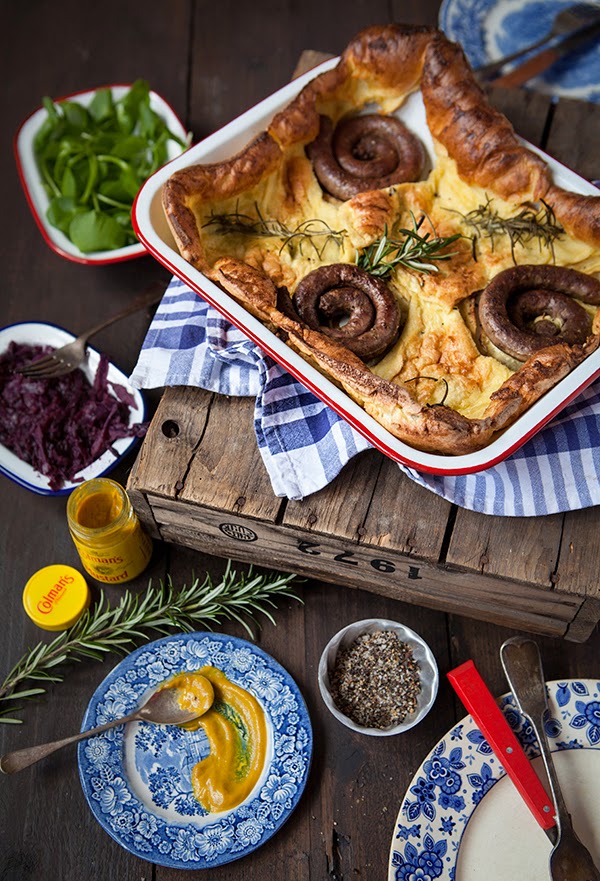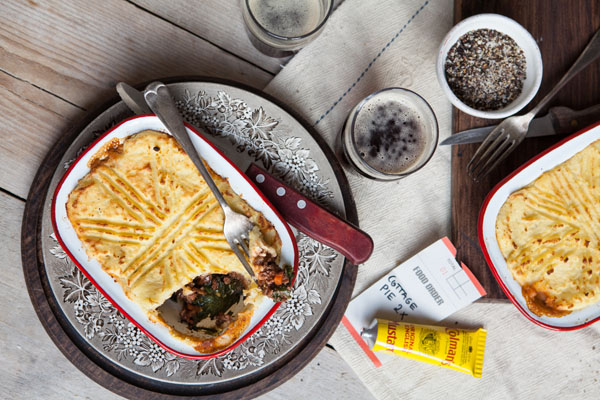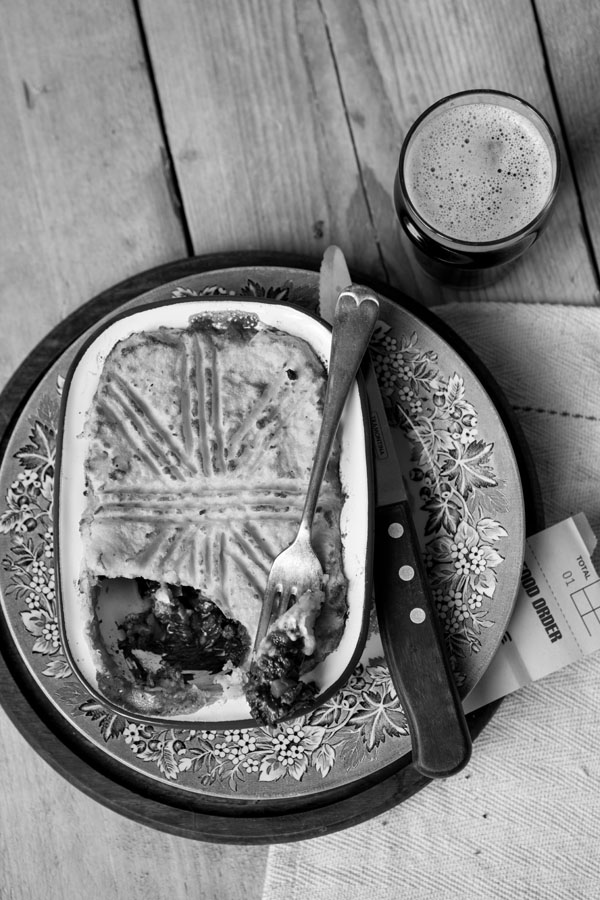The post ‘The Downton Abbey Christmas Cookbook’ my new book appeared first on Miss Foodwise.
]]>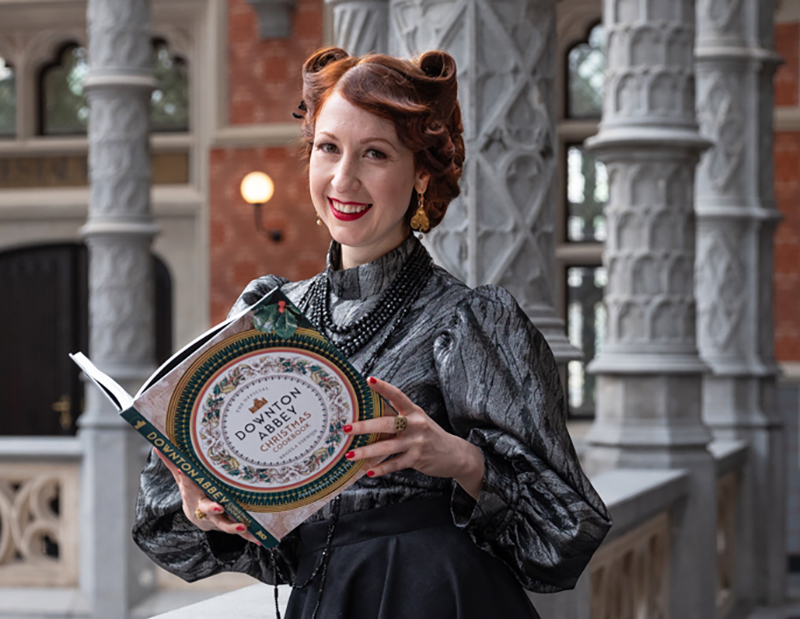
Copyright Greetje Van Buggenhout
I’m happy to announce the publication of my new book: ‘The Official Downton Abbey Christmas Cookbook’!<
(Scroll down for the reference list which wasn’t printed in the book because of the page count limit)
For this book I jumped into my collection of cookery books of not only the early 20th century in which Downton is set but also the Victorian era when our most beloved cook Mrs Patmore was training as a chef. I made a little excursion into the oldest cookery book in the English language for the first festive recipe for goose and witnessed the curiosity for continental cooking around the late 1920’s.
I also uncovered a celebration of strong women, from the extraordinary position of Mrs Patmore as a female chef in a period when men were still lord and master in the kitchens of the aristocratic households. But also Lady Edith’s story of breaking loose from the limitations that come with her social position as a woman from a great family pursuing a career as a columnist and later as the editor. She symbolises the modern times ahead in which women will not only gain more freedoms, but also the right to vote — with the suffragette movement in the headlines. Many of the recipes I chose came from cookbooks written by women, and some women, like England’s first freelance food journalist; Florence White, and Lady Agnes Jekyll were very much like Lady Edith. Others were cookbooks written by aristocratic ladies like Lady Cora Crawley with recipes gifted to them by other ladies of her circle.
This book is a celebration of Christmas, showing you where those traditional old customs come from and how some of them aren’t very old at all. Popularised by Charles Dickens ‘A Christmas Carol’ todays Christmas is what he made of it. Reviving long lost customs and placing family at the centre of it all. This book praises history but also looks at change. There’s patriotic pudding and emblematic beef, stunning pies and unexpected treats seasoned with many stories which makes this book not only very Downton, but also very Regula.
Flemish food writer and culinary historian Regula Ysewijn has brought to life not only the dishes of the Downton era but also some of the magnificent edible delights of earlier centuries. It is a brilliantly researched book full of tasty treats. I do hope you enjoy it.
— Julian Fellowes, Creator of Downton AbbeyThis is a beautiful book that goes beyond the expected foods of Christmas to show us delights we’ve long forgotten. Regula’s customary combination of solid research and gastronomic flair has unearthed a world of often surprising recipes seen through the lens of Downton Abbey.
— Dr. Annie Gray, Food Historian
I was invited to write this book in November and when I started my research in januari I had no idea I would be creating this book during a pandemic. After a lot of hurdles along the way, with the publishing team in lockdown on the other side of the world in a different timezone and the photoshoot in NYC cancelled more than once due to restrictions and printers closing and backlogging, we are more and excited we managed to bring out this book in time for Christmas 2020. This feels like a triumph.
The Official Downton Abbey Christmas Cookbook
By Regula Ysewijn
With a foreword by Dr Annie Gray
Release 27-29 oktober, Weldon Owen US, Titan Books UK, DK Verlag Germany
Traditional Christmas dishes include:
- Palestine Soup
- Sole à la Dorchester
- Jugged Hare with Prunesand Raisins
- Recipes for iconic roast beef, turkey and goose
- Duck with Orange, Lemon, and Olives
- Yorkshire Christmas Pie
- Spinach Balls à l’Italienne
- Bread sauce
- Anchovy Éclairs
- Plum Pudding
- Wartime Christmas Pudding
- Nesselrode Ice Pudding
- Whitby Yule Cake
- Epiphany Tart
- Cambridge Milk Punch
Signed Copies
Cookbook Bake in Brighton-Hove in England has signed copies of this book as wel as my recently published ‘Oats in the North, Wheat from the South’. Signed copies can always be obtained in Belgium at Luddites in Antwerp instore and online.
Reference list of books consulted
As we reached our page count there was no room for my reference list, hence why I am giving it here for those geeks like me who usually skip right to the bibliography before reading the actual book.
- A Book of Cookrye, AW, 1584
- A Book Of Scents And Dishes, Dorothy Allhusen, 1920
- A Christmas Garland, John C. Nimmo, 1885
- A Christmas Carol, Charles Dickens, 1843
- A Christmas Tree, Charles Dickens, 1850
- A Dictionary of Biblical Tradition in English Literature, David Lyle Jeffrey, 1992
- A History of New York, from the Beginning of the World to the End …,Washington Irving, 1809
- A Mummers’ Play from Limpley Stoke, Academic Journal Offprint from – Wiltshire Archaeology 83, Felicity Gilmour, 1990
- A Right Merrie Christmas. London: Leadenhall Press, ca. 1890; repr. New York: Benjamin Blom, John Ashton, 1968
- Antiquitates Vulgares: Or, The Antiquities of the Common People, Henry Bourne, 1725
- Apician morsels; or, Tales of the table, kitchen and larder by Secundus, Dick Humelbergius, 1829
- Beef Cattle Production and Trade, edited by Lewis Kahn, David Cottle, 2020
- Book of Salads, Alfred Suzanne; C. Herman Senn, 1906
- Cakes and Ale, Edward Spencer, 1913
- Christian, Roy, Old English Customs, Roy Christian, 1972
- Christmas carols ancient and modern, Tomlins, William Lawrence, 1844-1930, edited by William Sandys, 1830
- Christmas Carols, ancient and modern by William Sandys (1792–1874), 1833
- Christmas entertainments: wherein is described abundance of fiddle-faddle-stuff : curious memoirs of old Father Christmas : illustrated with many diverting cuts, Field & Tuer, 1740
- Christmas Husbandry Fare, Thomas Tusser, 1515- 1580
- Christmas in the Olden Time by Sir Walter Scott, 1886
- Christmas With The Poets, a collection of songs, carols, and descriptive verses relating to the festival of Christmas, from the Anglo-Norman period to the present time / embellished with fifty-three tinted illustrations by Birket Foster, and with initial letters and other ornaments, 1855
- Christmas, His Masque, Benjamin Jonson, Alternate Title: The Masque of Christmas Date first performed: Dec 1616- Date first published: 1640
- Christmas: Its Origin and Associations Together with Its Historical Events and Festive Celebrations During Nineteen Centuries, William Francis Dawson, 1902
- Christmas: Its Origin and Associations: Together with Its Historical Events and Festive …in the nineteenth century, William Francis Dawson. E. Stock, 1902
- Christmasse carolles newely enprinted, Wynkyn de Worde, This manuscript was previously known as “Douce Fragment 94b, 1521
- Clavis calendaria; or, A compendious analysis of the calendar, Volume 2, John Brady, 1815
- Common Sense in the Household: A Manual of Practical Housewifery, Marion Harland, 1874
- Curye on Inglysch (Middle English recipes), C.B. Hieatt en S. Butler, 1985
- Diary, Samuel Pepys
- Ecclesiastical History of the English People, Bede, Oxford university press, 1999
- Encyclopedia of Food Sciences and Nutrition (Second Edition), P.J. Hudson, in 2003
- English Presbyterian Eloquence, Thomas Lewis, 1720
- Epigrams theological, philosophical, and romantick: also the Socratick session, or, The arraignment and conviction of Julius Scaliger : with other select poems, Samuel Sheppard, 1651
- Farmers Almanac, 18th century, exact date unknown, Online edition over at: https://www.almanac.com/
- Five Hundred Points of Good Husbandry, Thomas Tusser, 1585, edition. 1812
- Fletcher’s Poems and Translations, 1656
- Food in England, Dorothy Hartley, 1954
- Good things in England, Florence White, 1932
- Great British Gardeners: From the Early Plantsmen to Chelsea Medal Winners, Vanessa Berridge, 2018
- Hesperides, Robert Herrick, 1648, As reproduced in: William Henry Husk, Songs of the Nativity (London: John Camden Hotten, 1868)
- Italian Regional Cooking, Ada Boni, translated by Maria Langdale and Ursula Whyte, 1969
- Kalm’s account of his visit to England : on his way to America in 1748, Pehr Kalm, 1892
- Kitchen Essays, Agnes Jekyll, 1922
- Langland, 1340, Piers Plowman
- London Bewitched, 1708
- London Labour and the London Poor, Volume 1, Henry Mayhew, 1851
- London images: John Camden Hotten, 1868
- Luncheon and Dinner Sweets, C. Herman Senn, 1911
- Mary Tudor: The First Queen. London: Little, Brown, Porter, Linda, 2007
- Mémoires et observations faites par un voyageur en Angleterre, Misson Francis Maximilian, 1698
- Modern Cookery, for Private Families, Eliza Acton, 1845
- Mrs Beeton’s Book of Household Management, Isabella Beeton, 1861
- New century cookbook, Charles Herman Senn, 1904
- Nursery Rhymes of England, James Orchard, 1842
- Observations on Popular Antiquities: Chiefly Illustrating the Origin of Our Vulgar Customs, Ceremonies, and Superstitions, Volume 1, John Brand, 1813
- Observations on the Popular Antiquities of Great Britain: Chiefly …, Volume 1 By John Brand, 1813
- Oxford Night Caps, by Richard Cook, Published 1835
- Oxford Night Caps: Being a Collection of Receipts for Making Various Beverages Used in the University, Richard Cook Slatter & Rose, 1871
- Poems of Places: An Anthology in 31 Volumes, Henry Wadsworth Longfellow, ed., 1876–79
- Poems on several occasions, and translations: wherein the first and second books of Virgil’s Æneis are attempted, in English. Thomas Fletcher, 1692.
- Reliquiæ Antiquæ: Scraps from Ancient Manuscripts, Illustrating Chiefly Early English Literature and the English Language, Volume 1, Thomas Wright, James Orchard Halliwell-Phillipps William Pickering, 1841, reprinted by Norwood Editions, Norwood, PA, 1973
- Round about our Coal Fire, or, Christmas Entertainments … with some curious Memories of Old Father Christmas; Shewing what Hospitality was in former Times, and how little there remains of it at present. – 1734, reprinted 1796, Anonymous (‘Dick Merryman’)
- Royal Museum Greenwich: https://www.rmg.co.uk/discover/behind-the-scenes/blog/proof-in-the-pudding – mention of Christmas pudding gifted to soldiers by Lady Rawlinson, wife of Lieutenant General Sir Henry Rawlinson
- Scotland: Vols. VI–VIII. 1876–79
- Songs of the Nativity, William Henry Husk, 1868
- Soyer’s Standard Cookery: A Complete Guide to the Art of Cooking Dainty, Varied, and Economical Dishes for the Household, 1912, [Soyer, Nicolas
- Spices, salt and aromatics in the English kitchen, Elizabeth David,
- Sports and Pastimes of Merry England”, 1859, Thomas Miller “
- Sports and Pastimes of Merry England”:Thomas Miller
- The Art of Cookery, John Mollard, 1803
- The Art of Cookery…, Hannah Glasse, 1747
- The ‘Boar’s Head Carol’ and Folk Tradition in Folklore, James E. Spears, 1974,
- The accomplished cook, Robert May, 1660
- THE ARRAIGNMENT Conviction and Imprisonment of CHRISTMAS,1645, Simon Minc’d Pye,
- The Book of Days: A Miscellany of Popular Antiquities in …, Volume 2 By Robert Chambers, 1832
- The book of vegetable cookery, Erroll Sherrson, 1931
- The complete practical cook: or, a new system of the whole art and mystery of cookery, Charles Carter, 1730
- The Cookery Book of Lady Clark of Tillypronie, Catherine Frances Frere, 1909
- The Country Housewife and Lady’s Director, Richard Bradley, 1727
- The Crayon: Volume 7, William James Stillman, John Durand, 31 December 1859
- The Curiosities of Ale & Beer: An Entertaining History, John Bickerdyke, 1889
- The diary of a country parson, edited by John Beresford, James Woodforde, 1740-1803.
- The diary of John Evelyn; by Evelyn, John, 1620-1706; Bray, William, 1736-1832
- The Dudley Book of Cookery and Household Recipes, Georgiana Countess of Dudley, 1909
- The Franklin’s Tale, The Canterbury Tales, Geoffrey Chaucer, 1387 -1400
- The Gentle Art of Cookery, Mrs C. F. Leyel and Miss Olga Hartley, 1925
- The Gentleman’s Magazine, Volume 94, Part 2; Volume 136, A. Dodd and A. Smith, 1824
- The Gentleman’s Magazine and Historical Chronicle, Karl Blind, “Boars Head Dinner at Oxford, and a Germanic Sun-God,” in John Nichols, ed. , Volume 242, 1877
- The Gentleman’s Magazine, december, 1733, p 652
- The Great War cookbook’, May Byron’s, 1915, re-issued 2014
- The Greedy Queen: Eating with Victoria, Dr Annie Gray, 2017
- The Krampus and the Old, Dark Christmas: Roots and Rebirth of the Folkloric …By Al Ridenour, 2016
- The letters of Charles Lamb, with a sketch of his life. The poetical works. Charles Lamb, Thomas Noon, 1838
- The Modern Baker, Confectioner and Caterer. A Practical and Scientific Work for the Baking and Allied Trades. In 6 volumes. John Kirkland, 1913
- The Modern Cook, Charles Elmé Francatelli, 1845
- The New Oxford Book of Carols, Hugh Keyte, Andrew Parrott, 1992
- The official Downton Abbey Cookbook, Dr Annie Gray, 2019
- The Oxford Companion to sugar and sweets, Darra Goldstein, 2015
- The Progresses and Public Processions of Queen Elizabeth …, John Nichols, 1823
- The Riches of Chaucer: In which His Impurities Have Been Expunged, His Spelling Modernised, His Rhythm Accentuated and His Obsolete Terms Explained; Also Have Been Added a Few Explanatory Notes and a New Memoir of the Poet, Volume 1, E. Wilson, 1835
- The Royal English and Foreign Confectionery Book, Charles Elmé Francatelli, 1862
- The Victorian Gardene, Caroline Ikin, 2014
- The Vindication of Christmas, John Taylor, 1652
- The Works of Jonathan Swift, Containing Interesting and Valuable Papers, Not Hitherto Published … With Memoir of the Author, Volume 1, Jonathan Swift, Thomas Roscoe H.G. Bohn, 1843
- The works of Mr. John Cleveland containing his poems, orations, epistles, collected into one volume, with the life of the author. Cleveland, John, 1613-1658.
- The Book of Christmas,Thomas Hervey, 1836
- Vanity Fair, William Makepeace Thackeray, 1847-48
- Women who cry Oranges, from Works, Jonathan Swift, 1755
- Works of Robert Herrick. vol II. Alfred Pollard, ed. London, Lawrence & Bullen, 1891
You might also like my other 2020 publication ‘Oats in the North, Wheat from the South’
The post ‘The Downton Abbey Christmas Cookbook’ my new book appeared first on Miss Foodwise.
]]>The post Bonfire, bangers and riots appeared first on Miss Foodwise.
]]>Two ways with sausages for Bonfire night: Jacket potato bangers and Toad in the hole
Last year on this day I wrote about Guy Fawkes and his connection to the Gunpowder Plot (see Gunpowder, treason and Bonfire Parkin here) and how it came to be that such plot was, well… plotted. I went back to nearly a hundred years before the plot, to see where that seed was sown.
Today I look at the customs that resulted from this failed plot and how it influenced the way we riot and react today to show our dismay, disappointment and disgust for politics and religion.
The trial of the eight surviving conspirators of the Gunpowder Plot was held on januari 27 1606 in Westminster Hall which would have destroyed had their plot been successful. A statute was passed, declaring that deliverance from Gunpowder treason should be remembered every year. From then on each 5th of november there would be a church service at which attendance was compulsory if you were loyal to the King, or at least wanted to pretend to be loyal. It became an annual ceremony to keep the memory of the failed Gunpowder Plot alive. It continued until it was taken out of the prayerbook two centuries later in 1859. But although it was erased from the prayerbook, it was by now rooted into the culture.
In a way the customs of the 5th of november provided a replacement to the pre-reformation holy days of All Saints and All Souls on the 1st and 2nd of November. On these days the churches would be lit with candles, and torches marking the start of winter and darkness. This catholic tradition in its own right had replaced the old pagan rites of Samhain, which celebrated the end of harvest and the beginning of winter. It literally means ‘summer’s end’ and is the primary festival marking the end and the beginning of the year.
When the christians needed to convert the pagans, they gave them the 1st of November, a day on which they could light candles and make lanterns in hollowed turnips, just as they had been doing for generations before christianity spread. The reformation to Protestantism left the people with an empty gap where their 1st of November celebrations used to be, so naturally they embraced the new bonfire tradition after the Gunpowder Plot failed in the first years of the 1600’s.
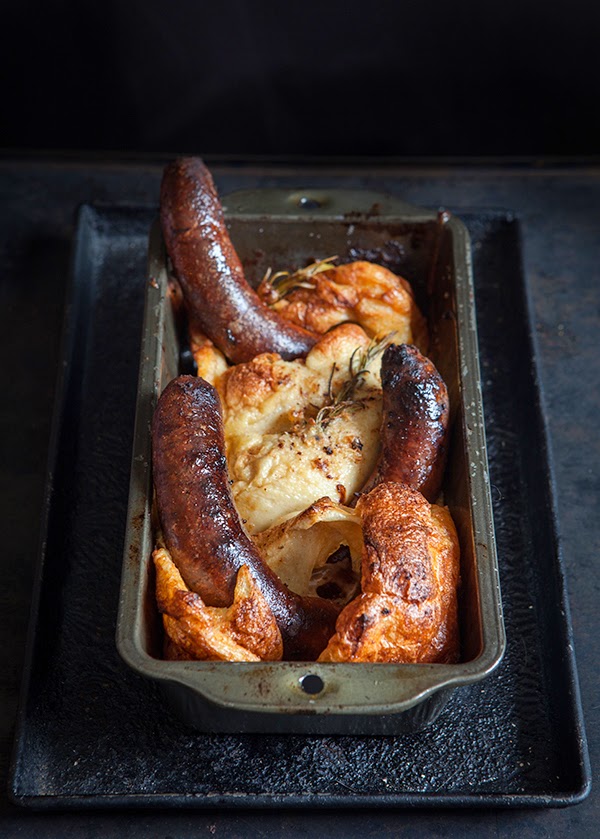 Conveniently to the Protestants, the 5th of november could be used as a celebration of the conservation of Protestantism, a date to mark in the calendar alongside the early death of Queen Mary (a Catholic), the long reign of Queen Elizabeth I (Protestant) and the defeat of the Spanish Armada (to warn off the Spanish Catholics).
Conveniently to the Protestants, the 5th of november could be used as a celebration of the conservation of Protestantism, a date to mark in the calendar alongside the early death of Queen Mary (a Catholic), the long reign of Queen Elizabeth I (Protestant) and the defeat of the Spanish Armada (to warn off the Spanish Catholics).
When Charles I married the Catholic princes of France, people showed their disapproval of the Catholic queen by burning effigies of the Pope and the devil on the 5th of November. We are now situated 20 years after the Gunpowder Plot and the only effigies that were burnt were that of the pope and the devil, not of Guy Fawkes.
In 1647 was described how bonfires went from simply great fires to spectacles with fireworks and explosives including fireballs. And in 1657 Samuel Clarke’s ‘England Remembrancer invoked the happenings of the plot.
After Charles II Restoration in 1660, Samuel Pepys wrote in his diary “This 5th of November is observed exceeding well in the City; and at night great bonfires and fireworks.” The next years up until the year of the Great Fire in 1666 (which was for a short time also blamed on the catholics) he also mentioned Bonfires and festivities which shows us the normality of these celebrations by this time. On one occasion he is driving home with his wife after going to see Macbeth “forced to go round by London-Wall home because of the bonefires.”
Celebrations of the 5th became larger and intense rather than festive after the brother of Charles II Duke of York publicly declared to be a Catholic. This was followed by the Exclusion Crisis to exclude the him from the throne because he was Roman Catholic. When the Tory’s started to declare being agains the Exclusion, this created probably one of the first bonfire night riots. In 1682 the 5th fell on a sunday so celebrations started on monday the 6th. Reputedly crowds of people took to the streets attacking Tories and shouting their support for the King’s bastard son, the Duke of Monmouth, who was Protestant. This Bonfire night, it was not a celebration of the failed Gunpowder Plot, it was a warning and objection against the possibility of being ruled by a Catholic king.
The next year on the 5th, bonfires and fireworks were banned to keep the calm. But you know what, two years later James did succeed Charles and England had a Catholic King… Needless to say that the Bonfire night celebrations were forbidden although the ‘Gunpowder Treason-Day’ church service remained.
Under the rule of James’ daughter Mary Stuart and her Protestant husband William of Orange, the celebrations of the 5th commenced and got entwined with the restoration of the Protestant religion in England by William of Orange. That double meaning didn’t stick though and years after this, it was forgotten and the 5th was yet again a celebration of the failing of the Gunpowder Plot.
Gunpowder Treason-Day’ church sermons changed each year, always highlighting another political event. Leaving the people a reason to take to the streets each year.
By the 18th century the festivities on the ‘fifth’ became less and less fuelled by hatred against Catholics and more about other political issues. The Catholic Relief Acts of 1778 and 1791 made life easier for Catholics, granting them the same rights as Protestants. Of course this sparked resistance leading to a week of rioting in 1780. But eventually the Catholics emancipated, helped by the Irish situation, with Catholic Irish members of Parliament. Of course in Ireland the troubles between the Irish Catholics and English Protestants remained.
Another change happened to the Bonfire night celebrations when anti-catholicism became less acceptable. By the early 19th century effigies of the pope were no longer burnt and the crowds needed another figure to ‘blame’. Strangely enough that figure became Guy Fawkes, the person who was least named in contemporary writings about the Treason and Plot. Although Guy Fawkes is mostly remembered on Bonfire night today, it was Robert Catesby who was chief instigator of the Gunpowder Plot (read my previous post to learn more of the plot).
So why did our Guy Fawkes become the figure of Bonfire Night? We can of course not say for certain why, but in 1793 just before the turn of the century, a play was performed at the Royal Haymarket Theatre. The prelude in one act was entitled: Guy Fawkes or The Fifth of November. In 1835 a comic pantomime called Harlequin and Guy Fawkes: or the 5th of November was performed in London’s Covent Garden. Many different stories about the Gunpowder Plot were told in plays after that, maybe the truth drifted away and the name Guy Fawkes just sounded best in playwright, maybe it was because he was discovered with the gunpowder…
But now Guy Fawkes has become the Gunpowder Plot, and the night of the fifth got often referred to as ‘Guy Fawkes night‘. He became the new face of the tradition, the scapegoat of the Plot, the symbol of opposition and disapproval.
Our story takes more turns in the 19th century with Bonfire night celebrations turning violent and dark. Victorian times saw the coming of a different sort of celebration, a night of rioting and criminal behaviour. A night when the honest should stay indoors and the dangerous ruled the streets.
The processions of ‘the night of the fifth’ would be fired with local social issues of politics and religion. They became manifestations, uprise agains local authorities and they became so dangerous and organised that they needed another organised organisation to contain them. So the police force grew to counter the protesters.
Today we live in a time with organised demonstrations, approved by the local authorities and contained for the safety of the protesters as well as the opponents and those who have nothing to do with it. But when the demonstrations do get ugly today, we see Guy Fawkes appear in the crowds…
Much like in the early 19th century plays about the Gunpowder Plot, a movie was made from a 1980’s graphic novel in 2005. ‘V for Vendetta’ is set in a near-future dystopian society in England, with the main character being ‘V’ a man wearing a Guy Fawkes mask, who wants to destroy the corrupt fascist regime and its leaders. One of the authors of the graphic novel commented that “The Guy Fawkes mask has now become a common brand and a convenient placard to use in protest against tyranny – and I’m happy with people using it, it seems quite unique, an icon of popular culture being used this way.” By many political groups the film was seen as an allegory of oppression by government. Anarchists, libertarians and activists of any kind have used the Guy Fawkes mask in their demonstrations after the movie came out. It has been seen in demonstrations agains the G8 summit and in other economical and political protest. It has become the emblem of anonymity and dissent.
The ‘Guy’ has gained another face, 400 years after he was just one pawn of the Gunpowder Plot. He has now become the face of disappointed people, the face disapproval in modern times. The face saying, we have had enough… For now at least.
On to the food part of this post. Bonfire
societies organise the Bonfire parades now in a safe and family
friendly manner. The streets of Lewes particularly are the place to be
for elaborate bonfire displays. People watch the parade and the fireworks and look forward to warming their hands on hot food and drink.
For this years bonfire night I give you two ways with bangers which are perfect for bonfire night celebrations at home. Toad in the hole is a traditional meat & batter pudding dish that evolved from the Yorkshire pudding-type puddings and other types of fired pudding.
It is bound to be a success with the little ones as who doesn’t love a good old proper sausage. The other dish is a banger jacket potato, an easy dish that even the most inexperienced cook could make. The potato just needs time to cook in the oven so do that in advance. It’s a perfect little bomb of warmth when you are planning to do some bonfiring of your own in the garden!
Toad in the hole
- good quality sausages, 3 or 4
- a few sprigs of rosemary (optional)
For the batter
- 280 ml milk
- 110 g plain flour
- a pinch of salt
- 3 medium eggs
preheat your oven to max 250° C
Fry your sausages in sunflower oil in a pan until nearly done
Pour 1 cm of sunflower oil into a baking stray or cake tin and place in the middle of the hot oven.
Place a larger tray underneath in case the oil drips over, you don’t want extra cleaning afterwards
Make your batter in the manner of making pancake batter
When your oil is hot, you will see as it will be spitting, arrange your sausages into place along with the oil you still have in your pan from frying your bangers
Carefully but swiftly pour the batter into the hot oil, stick in the rosemary sprigs and close the oven door. Bake for 20-25 minutes until puffed up and nicely colored.
Serve with mustard, braised red cabbage, jacked potato or mashed potato and caramelised onions if you like
To braise red cabbage
- red Cabbage
- a cooking apple, cubed ( for a football size cabbage you need 1 large cooking apple)
- a teaspoon of cinnamon
Cut your cabbage very finely, and heat some butter in a pan.
Add your cabbage and apple and braise, adding a little water when needed.
When soft, spice with a little honey and cinnamon
Serve warm, o so good with sausages
—————————————————————————————————-
Jacket potato bangers
For the potato
- 1 potato per person You need a floury kind like a Maris Piper, King Edward, or for Belgians ‘Bintje frietaardappel’
- +- 20g coarse sea salt
- good quality sausages
- 3 onions, braised and caramelised
Wash the potatoes and let them dry
Preheat your oven to 220° C
Put your salt in a tray and roll each potato in the salt and rub it in
Prick your potato with a toothpick a few times to prevent them bursting
Place the potatoes straight on the rack in the middle of the oven
Bake for 1 hour, then squeeze the potato slightly to see if it appears soft inside, if that doesn’t appear so, place back in the oven for another 15-30 minutes.
When the potatoes are nearly ready or when you are about to have dinner caramelise some onions, add one teaspoon of pomegranate molasse of balsamic vinegar, whatever you prefer and let it become nice and sticky. You could do this in advance too and just cook the sausages when you need them.
Finally fry your sausages in oil or butter, I prefer butter and oil in this case. Finish them off with 10 min in the oven along with your potatoes to heat them up again or on their final bake.
Then cut into the potato, add some of that caramelised onion, add a banger and serve!
Also very good with braised red cabbage.
Pudding!
Last years Bonfire parkin might take your fancy, find the recipe here >
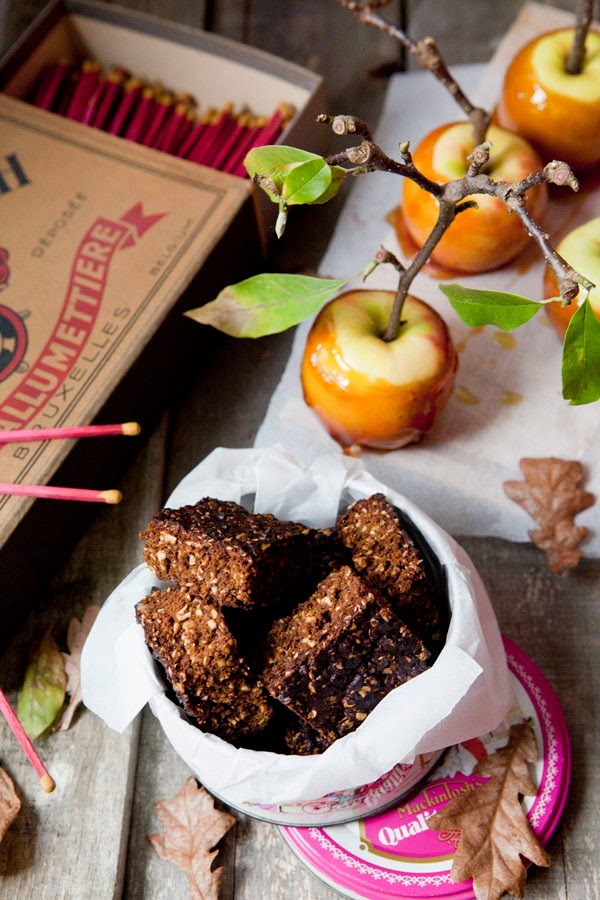 |
| Bonfire Parkin |
What are you doing for bonfire night?
The post Bonfire, bangers and riots appeared first on Miss Foodwise.
]]>The post George, the Dragon and the Cottage pie appeared first on Miss Foodwise.
]]>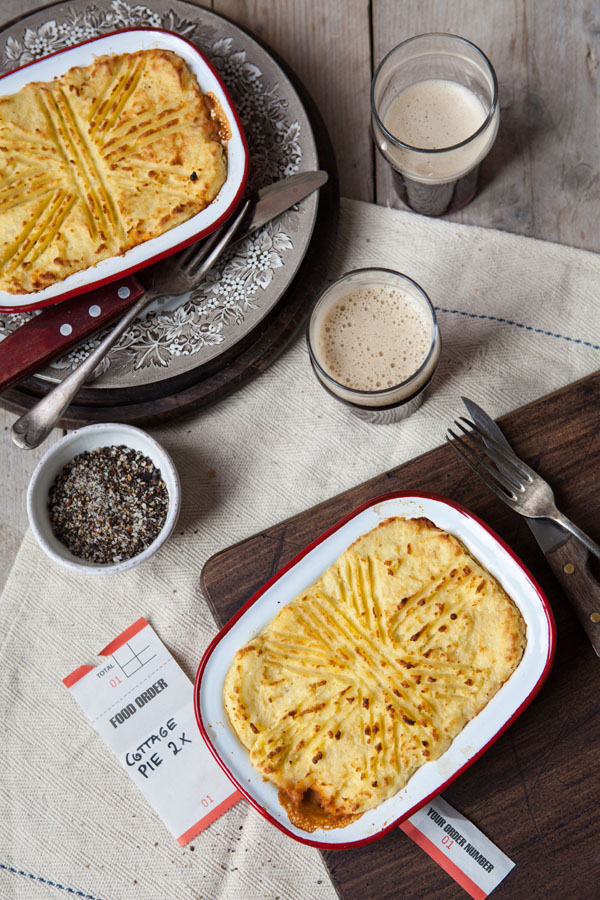
Wishing you all a happy Saint George’s Day with these humble cottage pies. I’ve been mostly working on my book, stuck with my nose in research and absolutely loving it but in the evening I long for great simple food with pure flavours. This pie is just that, with the best spuds you can find for your mash, decent flavoursome beef and a layer of moist spinach, this is a treat for me. I just wrap it in a towel and relax with a beer and a movie.
No doubt you will all have been waiting for the dragon slaying moment in this story but unfortunately I will have to disappoint you as there are no dragons in this tale.
Then the tale of George and the dragon appears in the Legenda sanctorum or Golden legend, a collection of hagiographies (stories of the Saints) by Jacobus de Voragine. This book of which there were over a thousand of manuscripts in the 13th century was very popular and was one of the first books that were printed in the English language when printing was invented around 1450.
So what are you up to today?
- 400 g beef mince, from chuck steak
- 1 large chestnut mushroom or a white one
- 1 stalk of celery
- 1 small carrot
- 1 clove of garlic
- a knob of butter to fry the meat and veg
- 1 small tin of tomato puree 50-70 gr (concentrate of tomato)
- 1 glass of red wine or stout beer like guinness – 250 ml
- 2 teaspoons of Worcester sauce
- 300 ml of beef or vegetable stock (I use an organic vegetable stock cube)
- Salt and pepper to taste
- A few handfuls of fresh spinach (you can use from your freezer too)
- Potato mash, you need 4 large spuds or use leftover if you have some
- Add 4 teaspoons of grated cheddar cheese
- 2 individual trays, or one larger one. Small pie pans work well. (14×19)
Method
Cook your spuds and make your mash with milk, butter, nutmeg and salt. If you like to make it richer, add an egg yolk too. You need a silky smooth mash which is slightly wetter than you’d eat it normally as it dries a bit in the oven.
Chop all the vegetables and add to a heavy based casserole, glaze a little over a medium flame and then add the meat. Brown the meat and add the tomato puree, stir well to combine evenly
When the tomato starts to caramelise – which means stick to the bottom of the pan, pour in the wine or beer. Stir to loosen up the meat and veg.
Let the booze evaporate, it takes about a minute, and it will be reduced a lot. If you don’t want to use alcohol, use water or stock
Now pour in the garlic, stock, and the Worcester sauce and put on the lid, leave for 30 minutes but check on it frequently so it doesn’t burn to the base. You may leave it longer too, it is merely for the flavours to develop.
Use boiling water from the kettle and blanch your spinach, drain and add a cube of butter, you may omit this but butter does taste so very well.
Preheat your oven to 180°C
Place your spinach in your chosen baking tray or trays, season with pepper.
When the meat is ready, transfer it to you tray or trays.
Now make the mash layer by scooping blobs of potato on the meat, then spread out.
You can pipe this mash, but who has the time to pipe mash on a weekday??
Place into the oven under the gril for about 10-15 minutes or until your mash has some color. It depends really on what you like, lightly coloured or not.
Serve with a beer, or wine if you like.
Put the rest in the freezer, we usually have some leftovers. These pies freeze very well, just defrost in your fridge overnight when planning to use.
Enjoy
You might also enjoy
Beef and Oyster pie
Watercress and trout pie
Sussex Stewed steak
Thank you for leaving a comment!
The post George, the Dragon and the Cottage pie appeared first on Miss Foodwise.
]]>